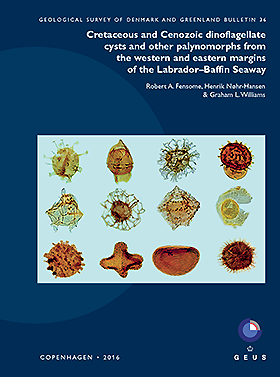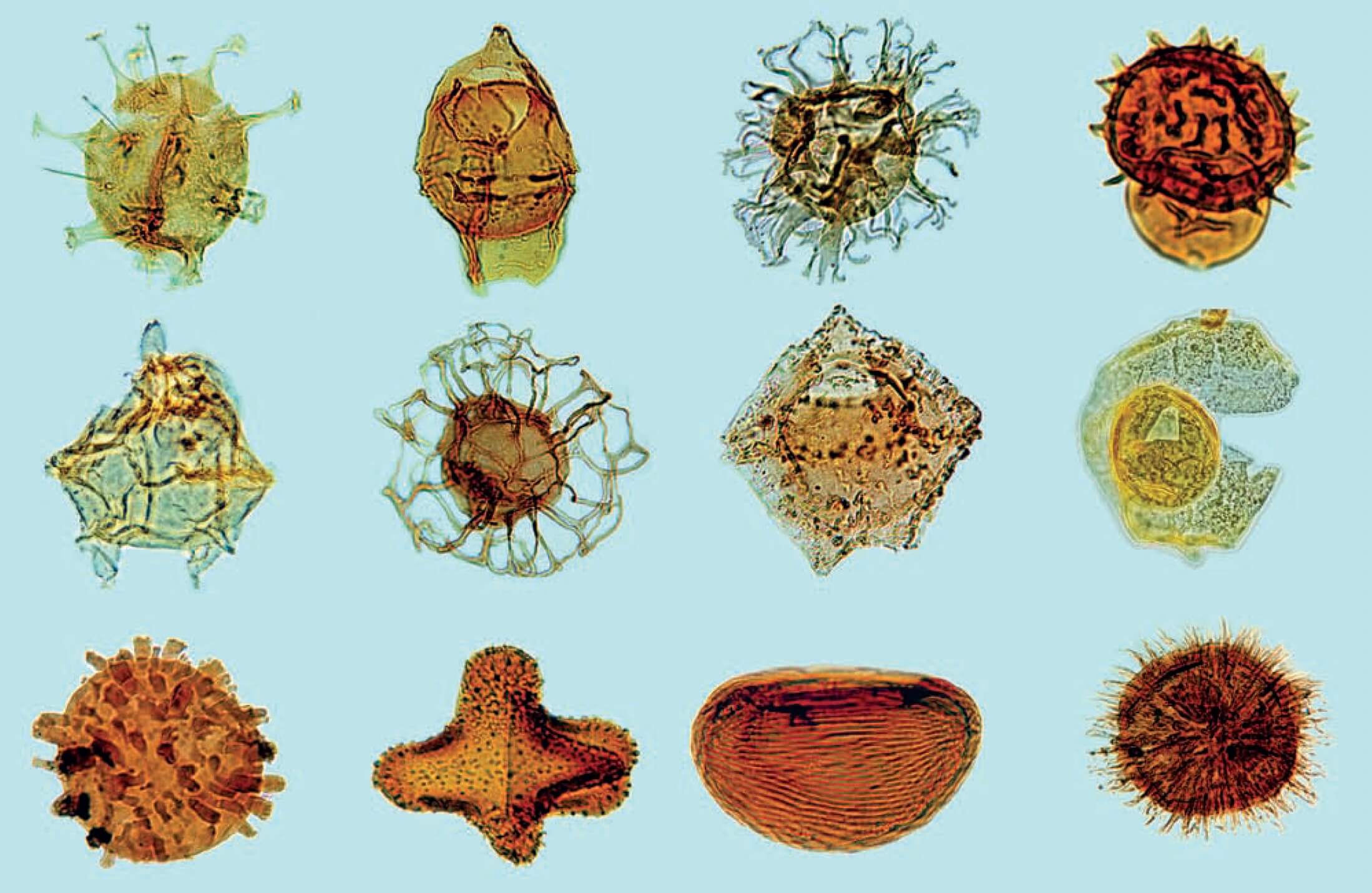Cretaceous and Cenozoic dinoflagellate cysts and other palynomorphs from the western and eastern margins of the Labrador–Baffin Seaway
Robert A. Fensome, Henrik Nøhr-Hansen & Graham L. Williams
The Labrador–Baffin Seaway between Canada and Greenland is a key element in understanding the tectonic evolution of the North Atlantic region during late Mesozoic and Cenozoic times. The sedimentary rocks forming the continental margins on either side of this seaway represent a vast data source documenting the evolution of the region from the initial continental rifting to the formation of a strait linking the Atlantic and Arctic oceans. This sedimentary archive is important both for charting the geotectonic history and assessing the resource potential of the area. The study presented in Geological Survey of Denmark and Greenland Bulletins 36 and 37 is a major contribution to our understanding of the development of the Labrador–Baffin Seaway. It is based on new palynological analysis of samples from 13 offshore wells on the Canadian margin and six wells from the Greenland margin, and is the first comprehensive study to present an integrated, consistent and fully documented biostratigraphic correlation across both continental margins.
This bulletin presents the formal taxonomy of the palynological record with illustrations of most taxa described herein. The systematic descriptions focus particularly on the dinoflagellate cysts: three new and five emended genera, 16 new species and six new combinations of species are proposed. A new acritarch species and a new miospore species are also described. This taxonomic documentation of the microflora forms the foundation both for detailed correlation across the Labrador–Baffin Seaway and for interpretation of changing environments and climatic conditions from Early Cretaceous to late Neogene times.






